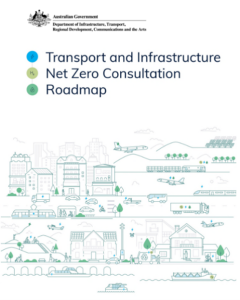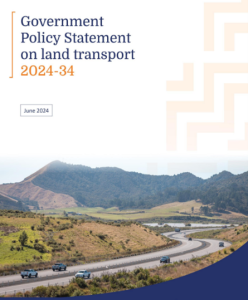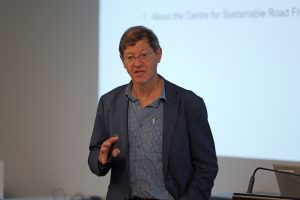July 2024 Newsletter
Dear HVTT forum family,
Much has been happening in this part of the southern hemisphere since we came together at Technology Convergence 2023 (HVTT17) last November.
In Australia and New Zealand, we’ve seen major policy initiatives that signal future directions, strategies, and priority areas for transport reform.
The road to net zero
Australia is committed to achieving net zero greenhouse emissions by 2050. In 2022, the Australian Government legislated Australia’s greenhouse gas emission targets:
- Net zero by 2050; and
- 43% below 2005 levels by 2030 (6 years away).
In May this year, the Department of Infrastructure, Transport, Regional Development, Communications and the Arts released a Transport and Infrastructure Net Zero Consultation Roadmap. The Consultation Roadmap highlights that transport is currently the third largest source of greenhouse gas emissions in Australia, and without further action, it is projected to be Australia’s highest emitting sector by 2030. Current projections indicate that Australia’s freight task is projected to grow by 26% to 2050, which is expected to result in a 77% increase in road freight (a smaller growth is expected in rail freight, while coastal and air freight is expected to remain steady).

A central pillar of Australia’s targets is the introduction of zero-emission vehicles. After light vehicles, heavy vehicles present the largest abatement opportunity for the transport sector.
Work is currently being progressed by Austroads on a project entitled Future Freight Vehicles and Buses Implications for Road Managers. It is researching the actions road managers can take to sustainability manage road infrastructure while supporting the transition to low and zero-emission vehicles (LZEVs). This work will assess the readiness of Australian and New Zealand road networks to support LZEVs and make comparisons with other regions.
Australian road agencies have already begun accommodating the emergence of zero-emission heavy vehicles with increased tare weights by granting exemptions for these vehicles to exceed regulatory mass limits. In the Australian state of New South Wales, a zero-emission heavy vehicle access trial allows additional axle mass for zero-emission heavy vehicles, specifically:
- 8 tonnes on a single steer axle (with a minimum 385mm tyre)
- 5 tonnes on a single drive axle
- Up to 18.5 tonnes on a tandem drive axle
- Up to 21 tonnes on a tri-axle drive axle.
In South Australia, a 12-month trial to monitor the road utilisation of low or zero-emission heavy vehicles is currently underway, allowing a steer axle mass of up to 7.5 tonnes and a tandem drive mass of up to 18.5 tonnes. Meanwhile, Victoria has introduced a standing policy for low and zero-emission heavy vehicles which offers a steer axle mass of up to 7.5 tonnes.
In each of the above cases, intelligent access arrangements – coupled with Smart OBM (On-Board Mass) – have been applied as a condition to establish a data-driven evidence base to inform ongoing access and management of the network to support the long-term rollout of zero-emission heavy vehicles.
Government Policy Statement on Land Transport (2024-34)
The New Zealand Government Policy Statement on Land Transport (2024-34) was released in June. The Statement recognises that New Zealand’s economic prosperity is underpinned by a transport network that enables people and freight to move around efficiently, quickly, and safely. It also highlights how new ways of pricing roads are being considered in response to the emergence of low and zero-emission vehicles. These vehicles are challenging the sustainability of customary methods of collecting revenue to fund roads through Fuel Excise Duty (FED).

In response, the Statement foreshadows all road vehicles to move from FED to Road User Charges (RUC), which has long been applied to diesel vehicles (and more recently electric vehicles) where charges are calculated according to vehicle weight and distance travelled.
Time-of-use charging on the most congested parts of New Zealand’s road network is also being explored. In the largest city of Auckland, the average commuter spends five days per year stuck in traffic, and freight delays are causing frustration and increasing costs.
Data as an enabler for reform
In the last month, we’ve seen the introduction of industry-led data sharing arrangements, where individual transport operators voluntarily share their telematics data with Transport Certification Australia (TCA), so that data-driven insights into the operation of vehicles and the movement of freight can be provided to inform better decision-making by industry and government.
Strong collaborative partnerships between the road transport industry, the telematics industry and government agencies – coupled with a shared vision of how aggregated and de-identified data can deliver improved outcomes – have underpinned the introduction of these arrangements.
As distinct from Intelligent Access arrangements, where government agencies specify the use of telematics as a legal condition of access (or enhanced access) to the road network, industry-led data sharing arrangements are entered into voluntarily by transport operators, and without the inducement of benefitting from improved access to the road network.
With an ever-increasing number of heavy vehicles using telematics, this approach has the potential to be used widely across regions. For instance, work is underway to establish similar industry-led data sharing arrangements in New Zealand.
HVTT Forum alumni in Australia
HVTT Forum Board Member, Daniel Ainalis, welcomed former HVTT Board Member David Cebon from the University of Cambridge and the Centre for Sustainable Road Freight (SRF) to talk at an event held by the National Transport Research Organisation (NTRO) in July.
David was kind enough to take some time out of his vacation in Australia to spend a day talking about the SRF and all things heavy vehicles. The event attracted members from government and industry and David provided an insightful keynote presentation on the UK’s progress in decarbonising road freight and heavy vehicles.
The session sparked conversations about the future of sustainable heavy vehicles in Australia and what lessons we can learn from the UK.

And a final note on the weather…
Australia and New Zealand are in the middle of their winter season. On the east coast of Australia, we’ve experienced above average rainfall, coupled with some below average temperatures – particularly in Melbourne.
Meanwhile, in New Zealand, the capital city of Wellington has had a relatively mild winter. Unfortunately, it has been different in other parts of the country with the east coast of the North Island suffering flooding and slips that have played havoc with road access and cut off communities.
One of the more noteworthy weather events was the Aurora Australis which happened to coincide with the inaugural TruckShowX event in Southern Victoria in May. Fellow HVTT Board member Rachel Michaud shared the above photo above with us, which was captured on the eve of the event.
As it happens, the aurora returned during the preparation of this newsletter, reportedly caused by large expulsions of plasma and magnetic field from the Sun’s corona, also known as coronal mass ejections (CME).

Gavin Hill
President
HVTT Fourm
